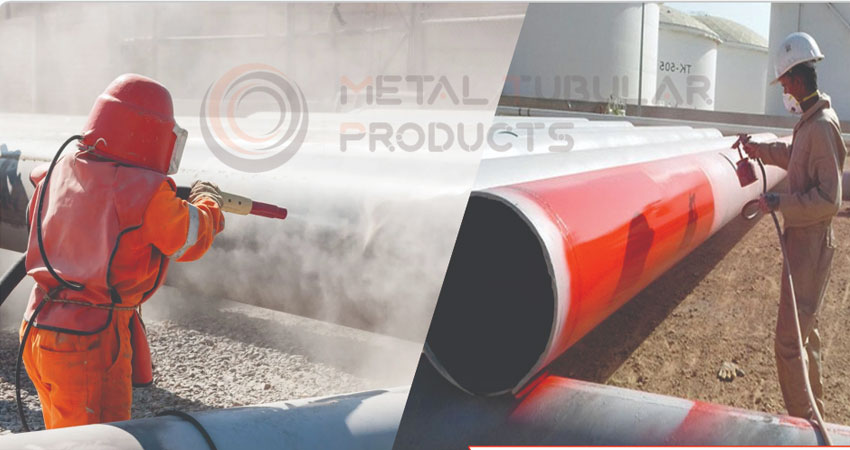Blasting And Painting Service

Blasting and painting services are often offered in the industrial and construction sectors. These services involve two main processes: abrasive blasting and painting/coating application.
Abrasive blasting methods include:
Sandblasting: Involves using compressed air to propel sand particles onto the surface. However, sandblasting is becoming less common due to concerns about health risks associated with silica dust inhalation.
Shot Blasting: Uses small metallic or non-metallic particles (shots) propelled at high speeds to clean or prepare surfaces. This method is often used in industrial settings.
Bead Blasting: Involves using small glass beads to clean surfaces without damaging the underlying material. It's often used for delicate or precision work.
Painting and Coating Application:
Primer: Applied as a first layer to improve adhesion of subsequent coatings and provide corrosion protection.
Topcoat: The final layer that provides the desired color, finish, and additional protection against UV radiation and environmental conditions.
Clear Coat: A transparent layer applied to protect and enhance the appearance of the underlying paint layer.
Anti-Corrosion Coatings: Specialized coatings designed to provide maximum protection against rust and corrosion.
It's important to note that blasting and painting services require skilled technicians, appropriate equipment, safety measures, and compliance with environmental regulations. Additionally, the choice of abrasive material, coating type, and application method depends on the specific project requirements, the type of surface being treated, and the environmental conditions the treated object will face.
When seeking blasting and painting services, it's advisable to work with reputable contractors who have experience in industrial surface preparation and coating application. These professionals can help determine the most suitable methods and materials for your project while ensuring safety and regulatory compliance.
We supply Pipes, Tubes & Fittings Worldwide.
Exporting Steel Pipes & Tubes to over 60 countries including Afghanistan, Albania, Andorra, Angloa, Austria, Australia, Bahrain, Bangladesh, Bhutan, Brazil, Brunei, Belarus, Belgium, Bulgaria, Cambodia, China, Cyprus, Croatia, Czech Republic, Canada, Denmark, Estonia, Egypt, Finland, France, Germany, Greece, Georgia, Hungary, Iceland, Ireland, Italy, Indonesia, Iran, Iraq, Israel, Japan, Jordan, Kazakhstan, Kuwait, Kyrgyzstan, Lebanon, Latvia, Latin America, Liechtenstein, Lithuania, Luxembourg, Malta, Madagascar, Mexico, Moldova, Monaco, Malaysia, Maldives, Mongolia, Myanmar (Burma), Nepal, New Zealand, North Korea, Netherlands, Norway, Nigeria, Oman, Poland, Portugal, Pakistan, Palestine, Philippines, Qatar, Russia, Romania, Russia, San Marino, Serbia and Montenegro, Slovakia, Slovenia, Spain, Sweden, Switzerland, Saudi Arabia, Singapore, South Korea, South Africa, Sri Lanka, Sudan, Syria, Taiwan, Tanzania, Tajikistan, Thailand, Turkey, Turkmenistan, Ukraine, United Kingdom, United Arab Emirates (UAE), Uzbekistan, Venezuela, Vietnam, Yemen, etc.
Applications Industry
| Pharmaceutical Equipment | Chemical Equipment |
| Sea Water Equipment | Heat Exchangers |
| Heat Exchangers | Gas Processing |
| Condensers | Specialty Chemicals |
| Pulp and Paper Industry | Pharmaceuticals |
Overview of how HIC testing works:
1) Hydrogen Absorption: Metals exposed to hydrogen can absorb hydrogen atoms into their crystal lattice, a process called hydrogen absorption or hydrogen uptake.
2) Hydrogen Migration: Hydrogen atoms can diffuse through the metal's crystal structure, eventually accumulating in regions of high stress, such as grain boundaries or other areas with microstructural defects.
3) Local Embrittlement: The presence of hydrogen weakens the metal's mechanical properties, making it more susceptible to cracking and fracture under stress, even if the stress is below the material's yield strength.
4) Corrosive Environment: HIC is often associated with a corrosive environment that provides the conditions necessary for hydrogen to penetrate the metal surface and migrate within it.
5) Residual Stress: Residual stresses from manufacturing processes or operational conditions can also contribute to the development of HIC.
6) HIC is particularly concerning because it can lead to catastrophic failures without significant plastic deformation or warning signs. It often occurs without any visible external corrosion or changes in appearance.
Preventing HIC involves several strategies:
1) Material Selection: Using materials that are resistant to hydrogen embrittlement and suitable for the intended environment can help mitigate the risk of HIC.2) Operating Conditions: Managing operating conditions such as temperature, pressure, and exposure to corrosive substances can reduce the likelihood of HIC.
3) Cathodic Protection: Employing cathodic protection systems can help reduce the likelihood of corrosion, which in turn can reduce the risk of hydrogen ingress.
4) Hydrogen Mitigation: Certain techniques, such as heat treatments, can help remove or reduce absorbed hydrogen from the metal's lattice, making it less susceptible to HIC.
5) Material Testing: Performing hydrogen embrittlement testing and assessment of susceptibility during material selection and quality control processes can help identify materials prone to HIC.
6) Inspection and Monitoring: Regular inspections and monitoring for signs of cracking or degradation are crucial for early detection of potential HIC-related issues.
7) Coating and Surface Protection: Applying protective coatings or barriers can help prevent hydrogen from penetrating the metal surface.
We supply Pipes, Tubes & Fittings Worldwide.
Exporting Steel Pipes & Tubes to over 60 countries including Afghanistan, Albania, Andorra, Angloa, Austria, Australia, Bahrain, Bangladesh, Bhutan, Brazil, Brunei, Belarus, Belgium, Bulgaria, Cambodia, China, Cyprus, Croatia, Czech Republic, Canada, Denmark, Estonia, Egypt, Finland, France, Germany, Greece, Georgia, Hungary, Iceland, Ireland, Italy, Indonesia, Iran, Iraq, Israel, Japan, Jordan, Kazakhstan, Kuwait, Kyrgyzstan, Lebanon, Latvia, Latin America, Liechtenstein, Lithuania, Luxembourg, Malta, Madagascar, Mexico, Moldova, Monaco, Malaysia, Maldives, Mongolia, Myanmar (Burma), Nepal, New Zealand, North Korea, Netherlands, Norway, Nigeria, Oman, Poland, Portugal, Pakistan, Palestine, Philippines, Qatar, Russia, Romania, Russia, San Marino, Serbia and Montenegro, Slovakia, Slovenia, Spain, Sweden, Switzerland, Saudi Arabia, Singapore, South Korea, South Africa, Sri Lanka, Sudan, Syria, Taiwan, Tanzania, Tajikistan, Thailand, Turkey, Turkmenistan, Ukraine, United Kingdom, United Arab Emirates (UAE), Uzbekistan, Venezuela, Vietnam, Yemen, etc.
